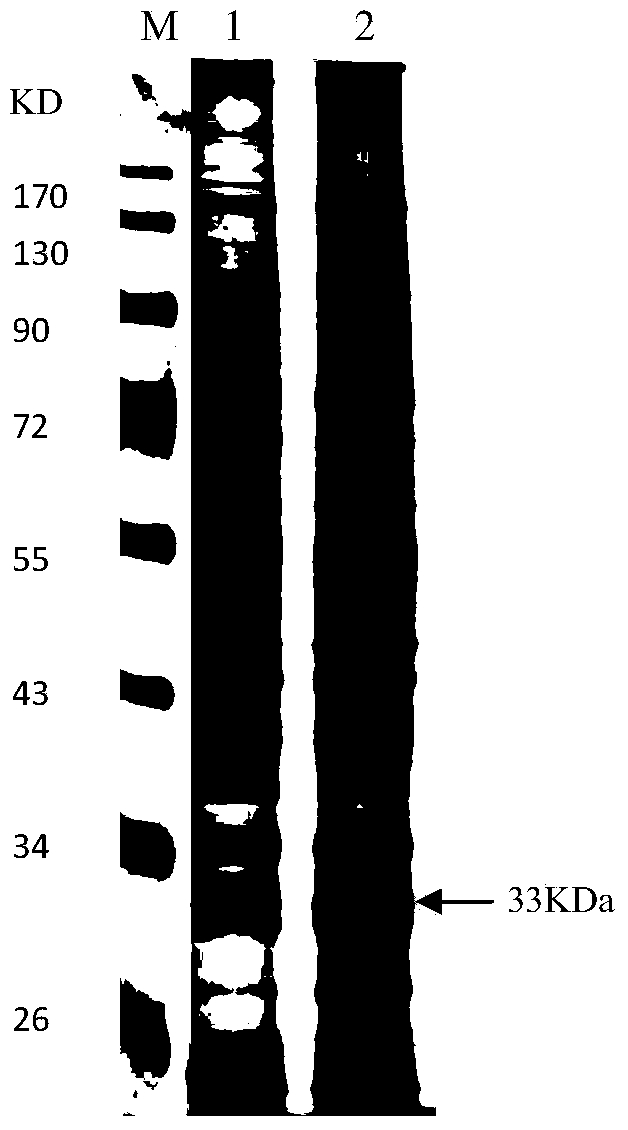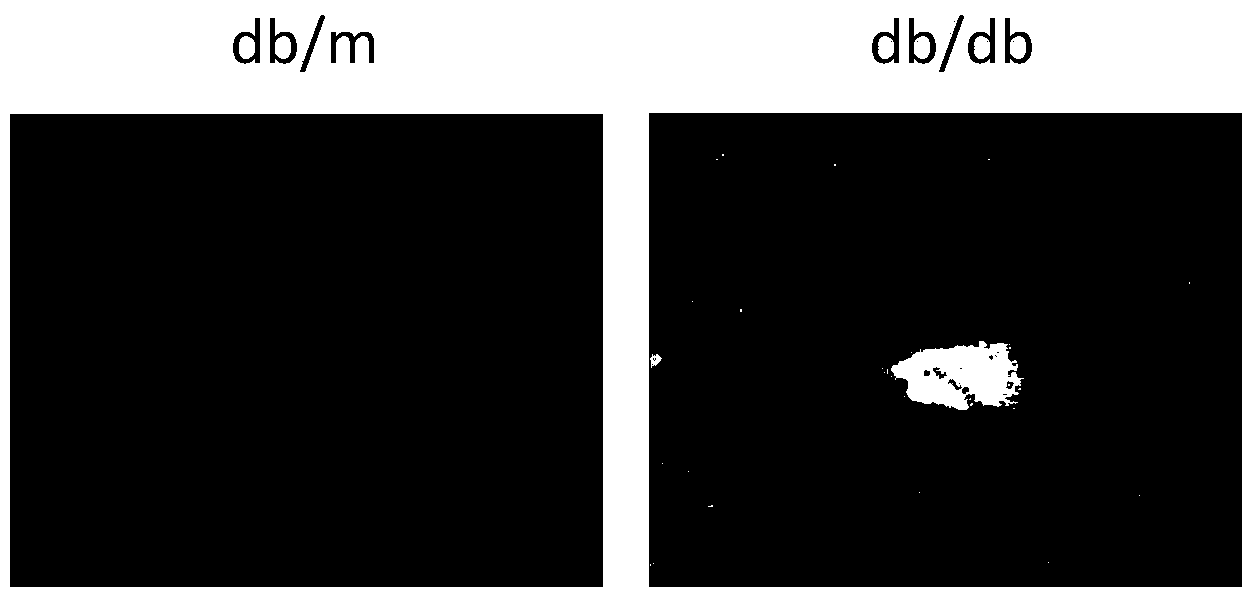Novel application of inhibitor for protein HSD17B13 or coding genes thereof
A technology that encodes genes and inhibitors, applied in the field of biomedicine, can solve problems such as the lack of effective treatments
- Summary
- Abstract
- Description
- Claims
- Application Information
AI Technical Summary
Problems solved by technology
Method used
Image
Examples
Embodiment 1
[0065] Example 1. Differential proteomics research on lipid droplet-associated proteins between normal people and fatty liver patients
[0066] In this embodiment, the isolated liver tissue samples come from: normal people and fatty liver patients. Among them, the liver tissue samples of normal people come from healthy volunteers (without liver disease or other diseases); the liver tissue samples of fatty liver patients come from patients with clinically diagnosed fatty liver, provided by Peking University First Hospital.
[0067] 1. Liver lipid droplet purification
[0068] 1. Soak the liver tissue sample in precooled 4°C PBS, carefully remove the capsule and connective tissue with small scissors, cut into 1mm×1mm×1mm small pieces, and transfer to 10ml precooled hypotonic solution A.
[0069] Pre-cooled hypotonic solution A: 20mM glycine, 250mM sucrose, pH7.8, prepared with double distilled water. Each concentration is the final concentration of the corresponding component...
Embodiment 2、I
[0110] Example 2, Detection of HSD17B13 Protein Expression in Liver Tissues of Type II Diabetic Mice and High Fat Mice
[0111] In order to further confirm that there is a positive relationship between HSD17B13 protein expression and lipid deposition in liver tissue, the inventors of the present invention investigated the lipid deposition in liver tissue of type II diabetic mice and high-fat mice showing clinical symptoms of fatty liver. The situation and the expression level of HSD17B13 protein were detected.
[0112] 1. Expression detection of HSD17B13 protein in liver tissue of type II diabetic mice
[0113] Type II diabetic mice (db / db): the genetic background is C57BL / KsJ, purchased from Shanghai Southern Model Organism Research Center. The mice exhibited clinical symptoms of fatty liver.
[0114] Control mice (db / m): the genetic background is C57BL / KsJ, purchased from Shanghai Southern Model Organism Research Center. The mice had no clinical symptoms of fatty liver. ...
Embodiment 3
[0135] Example 3, Construction of recombinant adenovirus expressing HSD17B13 protein
[0136] In this example, AdEasy system will be used to package recombinant adenovirus expressing HSD17B13 protein, as follows:
[0137] 1. Preparation of HSD17B13 recombinant adenovirus (Ad-HSD17B13)
[0138] 1. Cloning of the full-length sequence of HSD17B13
[0139] The amino acid sequence of the HSD17B13 protein is shown in Sequence 1 of the Sequence Listing, and its coding sequence is shown in the 25th-927th nucleotides from the 5' end of the Sequence 2 of the Sequence Listing. Analyze the HSD17B13 gene shown in Sequence 2, design primers near both sides of its coding region, and add a His tag to the downstream primers. The final primer sequence is as follows:
[0140] Upstream primer: 5'-GC ATGAACATCCATCCTAGAAATCC-3' (positions 3-24 of this sequence are positions 25-46 of sequence 2);
[0141] Downstream primer: 5’-GC TCA ATGGTGATGGTGATGATG TTTCATTTTTGATTTTGT -3' (underlined is the ...
PUM
| Property | Measurement | Unit |
|---|---|---|
| Density | aaaaa | aaaaa |
| Titer | aaaaa | aaaaa |
Abstract
Description
Claims
Application Information
 Login to View More
Login to View More - R&D
- Intellectual Property
- Life Sciences
- Materials
- Tech Scout
- Unparalleled Data Quality
- Higher Quality Content
- 60% Fewer Hallucinations
Browse by: Latest US Patents, China's latest patents, Technical Efficacy Thesaurus, Application Domain, Technology Topic, Popular Technical Reports.
© 2025 PatSnap. All rights reserved.Legal|Privacy policy|Modern Slavery Act Transparency Statement|Sitemap|About US| Contact US: help@patsnap.com



